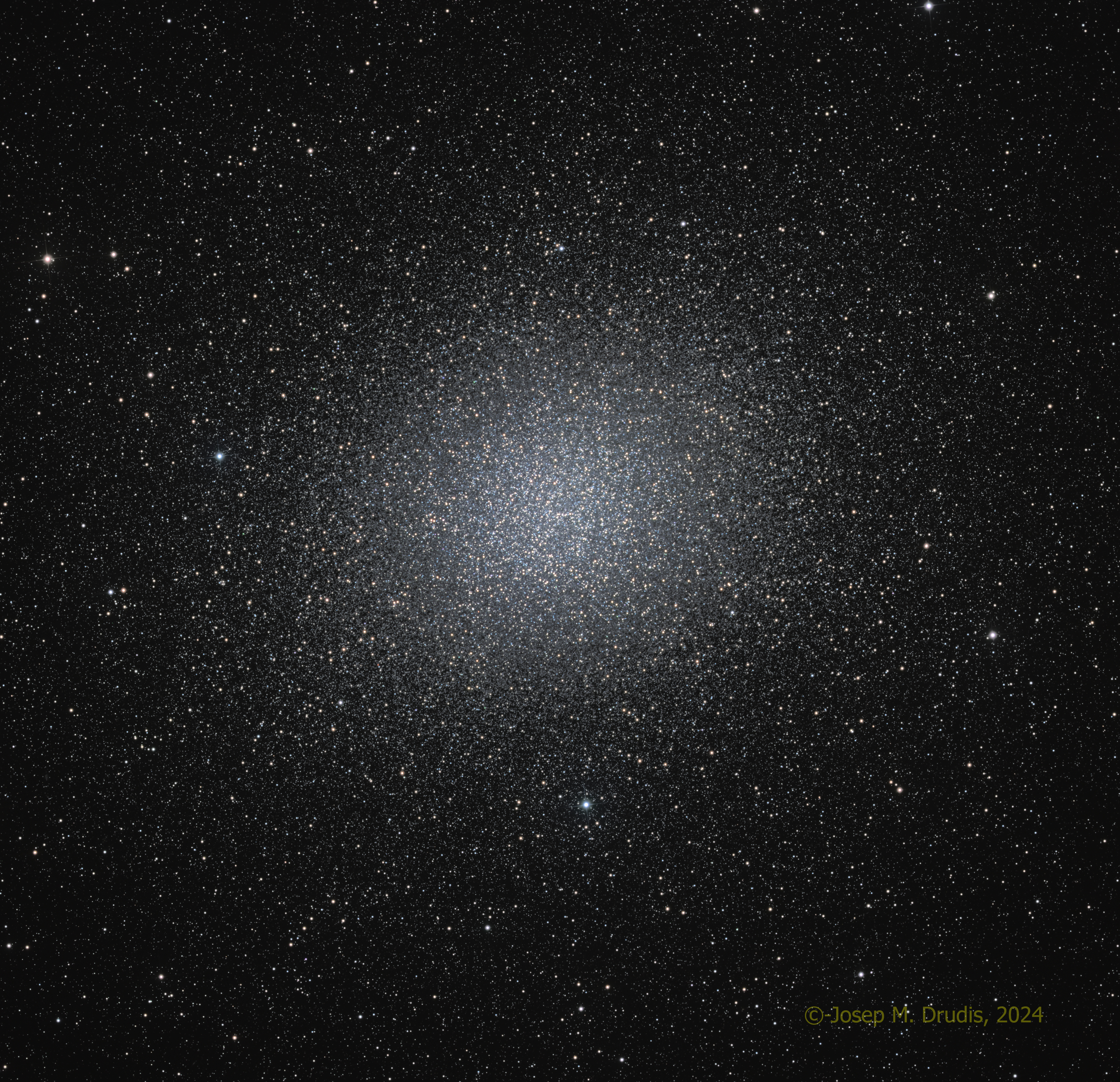
Click on the image for a full resolution image
NGC 5139 is the brightest and most massive globular cluster orbiting the Milky Way. In the Local Group, it is only surpassed by Mayall II in the Andromeda Galaxy (M31). This massive globular, with more than 4 million stars in it, has shown many evidences that, as it is also the case in Mayall II, it contains one intermediate-mass black hole in its center (with a mass less than one million suns, but thought to be about 10,000). This very old cluster (close to 12 billion years old) is thought to be the remains of a small galaxy long ago absorbed by the Milky way. Many factors confirm this fact, among them: its chemistry, the fact that its stars did not form all at once (as globulars do) and its motion across the Milky Way.
This image was taken in 2015 and uploaded into this page, but it has been reprocessed in 2024, with new processing tools and replaced the previous one.
Additional Information
Object
Name(s): NGC 5139, Caldwell 80, Omega Centauri
Type: Globular Cluster
RA: 13h 26m 46.6s
Dec: -47º 28’ 39.2”
Constellation: Centaurus
Size (arcmin): 38
Magnitude: +3.5
Distance: 15,000 ly
Image
Date: 2015-07-06
Location: SSO near Coonabarabran, NSW Australia
Size (arcmin): 37×37
Telescope: Planewave CDK 20” f/6.8
Camera: SBIG 16803 (4096x4096pix)
Guiding: Astrodon MonsterMOAG off-axis guider
Total exposure: 290 min (L: 110min; RGB: 180min)
Processing: CCDStack, Photoshop CC 2016 and PixInsight (one process)